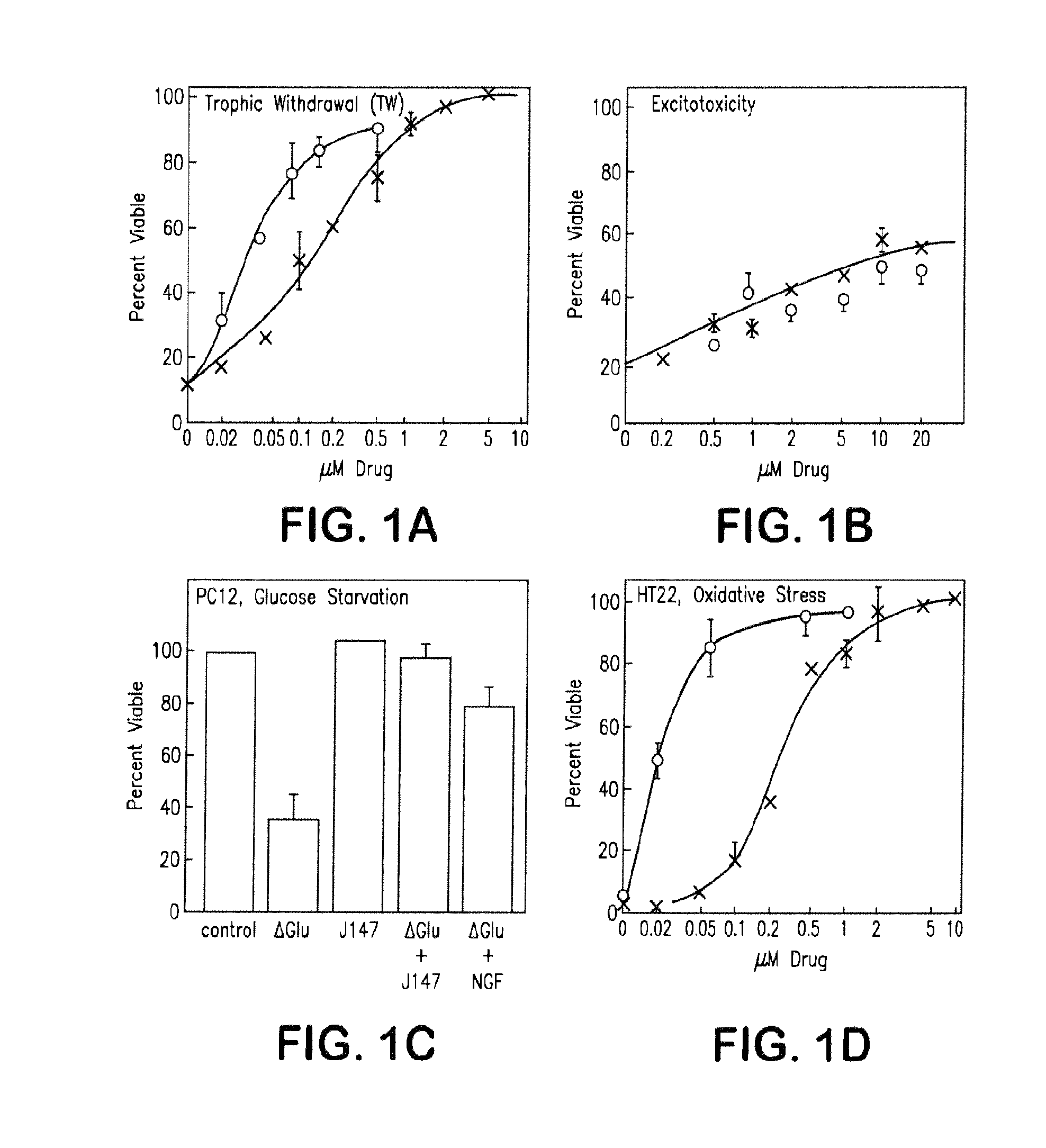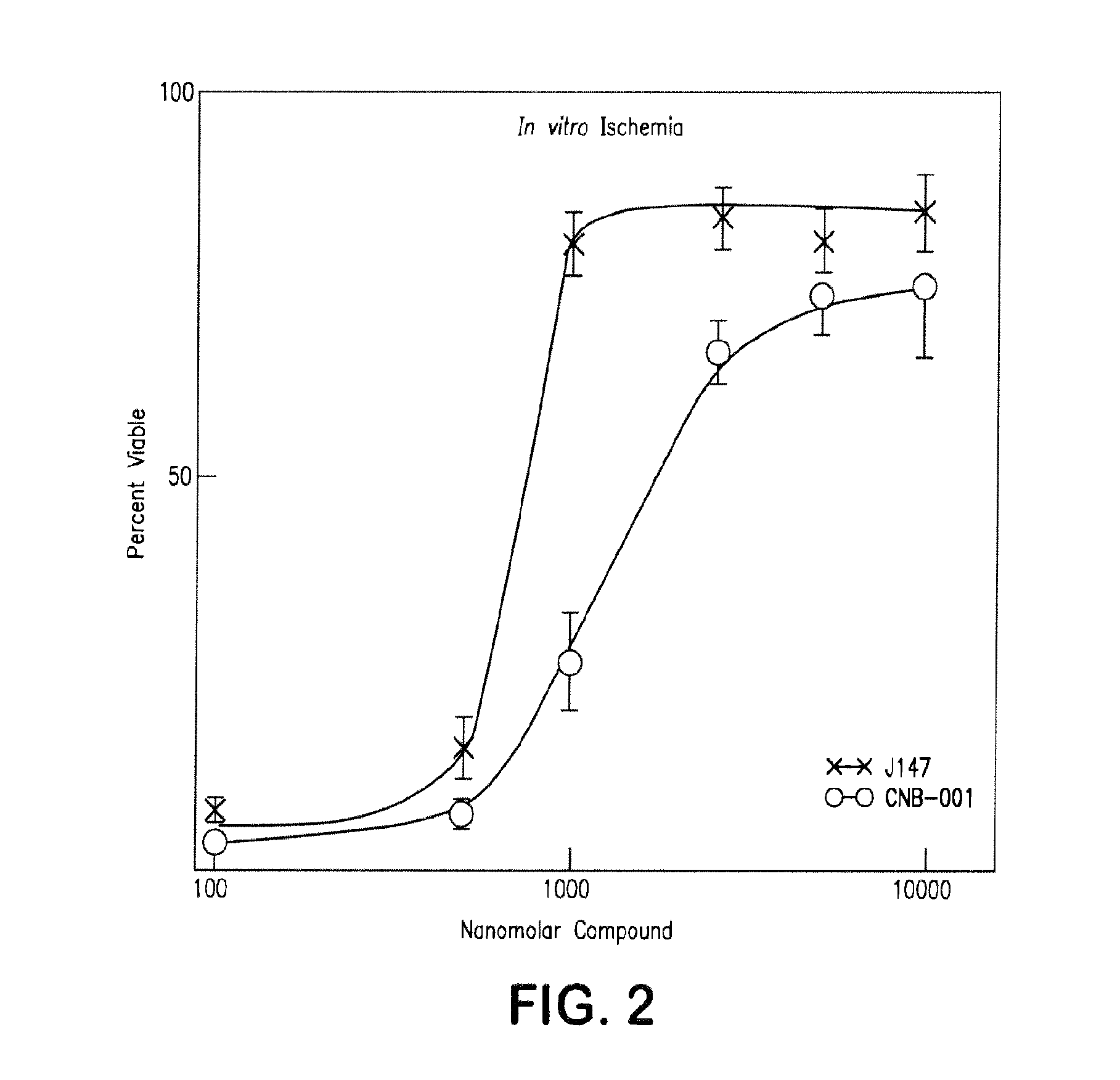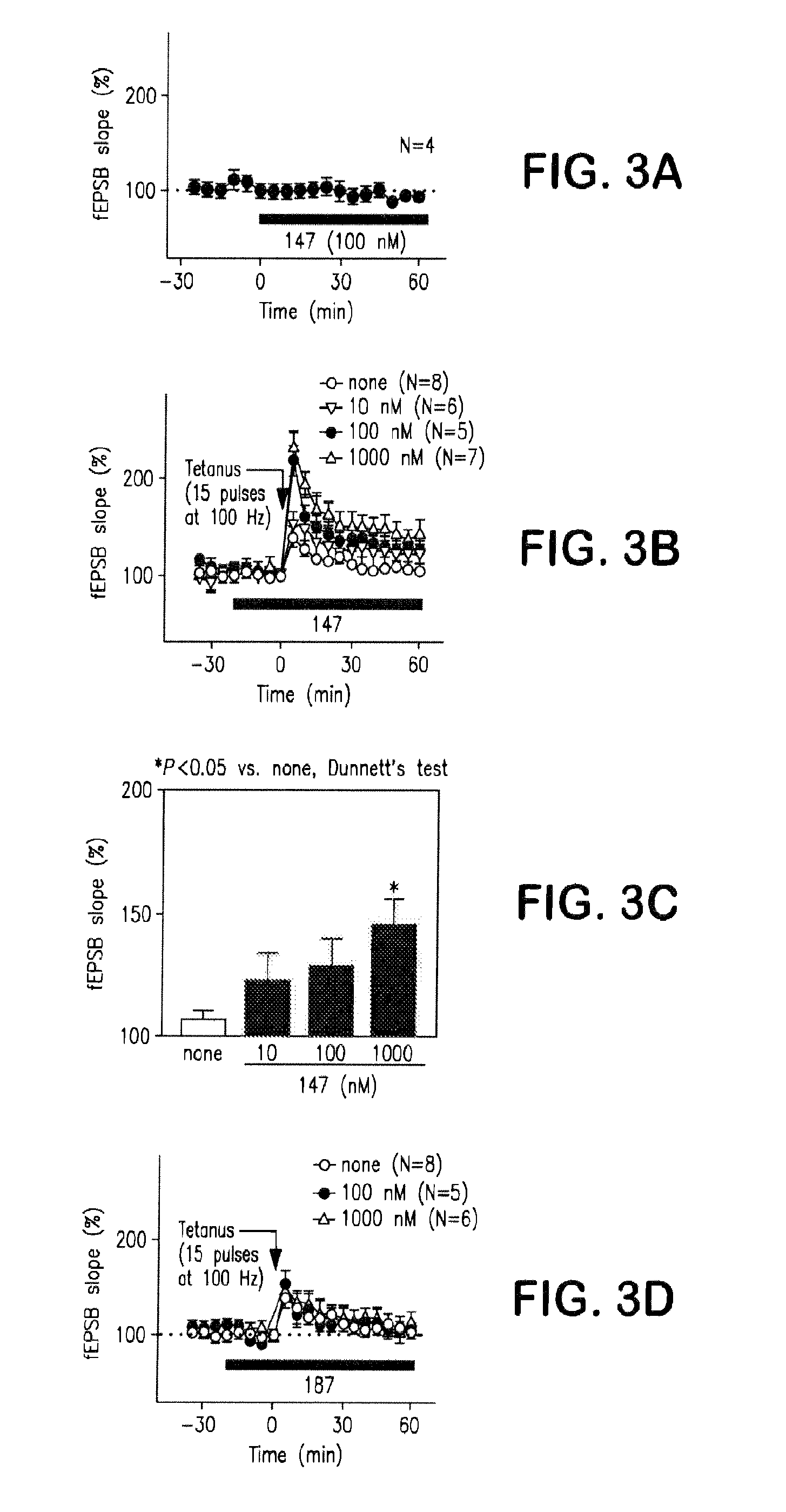Methods for treating a variety of diseases and conditions, and compounds useful therefor
a technology for a variety of diseases and conditions, applied in the field of new drugs, can solve the problems of pharmacokinetic behavior, few effective drug treatments for acute neural injuries, and clinical studies with these protein-based neurotrophic factors have proved disappointing, so as to promote neuroregeneration and memory formation
- Summary
- Abstract
- Description
- Claims
- Application Information
AI Technical Summary
Benefits of technology
Problems solved by technology
Method used
Image
Examples
example 1
General Assays for Detecting Neuroprotective Activity
[0127]Primary cortical neurons can be prepared from 18-day-old embryos of Sprague-Dawley rats as described (Liu & Schubert, J. Neurochem., 1997, 69:2285-2293 and J. Neurochem., 1998, 71:2322-2329). Briefly, the cerebral cortex is dissected out under an anatomical microscope and is freed of meninges and blood vessels. The cortex is cut into small pieces and is then dissociated by trypsin digestion and passed through a pipette tip. Dissociated neurons are suspended in various media and plated on polylysine-coated 35 mm tissue culture dishes (e.g., 1×106 cells / dish). Several different culture conditions can be used as known in the art. Invention compounds can be added to cell culture dishes. Cell survival can be measured 1-2 days after compound administration.
[0128]A serum-containing medium can be used which includes a minimal essential medium (Sigma) containing 30 mM glucose, 2 mM glutamine, 1 mM pyruvate, penicillin (100 U / ml), str...
example 2
Assays for Tropic Factor Withdrawal
[0130]The structure-activity relationships of compounds according to the present invention can be determined by measuring trophic factor withdrawal in mouse primary cortical neurons. As shown in FIG. 1A-FIG. 1D, compounds are added to low density primary cultures of E18 rat cortical neurons at the time of plating, and cell survival is determined two days later by a variety of methods.
example 3
Assays for Excitotoxicity
[0131]The structure-activity relationships of various compounds according to the present invention can also be determined by measuring excitotoxicity in mouse primary cortical neurons, as follows:
[0132]Excitotoxicity assay is carried out with primary cultures of cortical neurons prepared from embryonic day 14 BALB / c mouse embryo cortices as described (Schubert and Piasecki, J. Neurosci. 21:7455-7462, 2001). The cells are plated at 1×105 cell / well in 96-well ploy-L-lysine and laminin-coated microtiter plates. Cortical neurons after 11 days of culture are exposed to 10 μM glutamate for 10 min, followed by the addition of varying concentrations of invention compounds. Cell viability is determined 24 hr later with the 3-(4,5-dimethylthiazol-2-yl)-2,5-diphenyltetrazolium bromide (MTT) assay. MTT reduction is a widely used method for measuring cell proliferation and viability (Mosmann, J. Immunol. Methods 65:55-63, 1983).
[0133]Similar toxicity assays as described ...
PUM
| Property | Measurement | Unit |
|---|---|---|
| diameter | aaaaa | aaaaa |
| concentration | aaaaa | aaaaa |
| flow rate | aaaaa | aaaaa |
Abstract
Description
Claims
Application Information
 Login to View More
Login to View More - R&D
- Intellectual Property
- Life Sciences
- Materials
- Tech Scout
- Unparalleled Data Quality
- Higher Quality Content
- 60% Fewer Hallucinations
Browse by: Latest US Patents, China's latest patents, Technical Efficacy Thesaurus, Application Domain, Technology Topic, Popular Technical Reports.
© 2025 PatSnap. All rights reserved.Legal|Privacy policy|Modern Slavery Act Transparency Statement|Sitemap|About US| Contact US: help@patsnap.com



